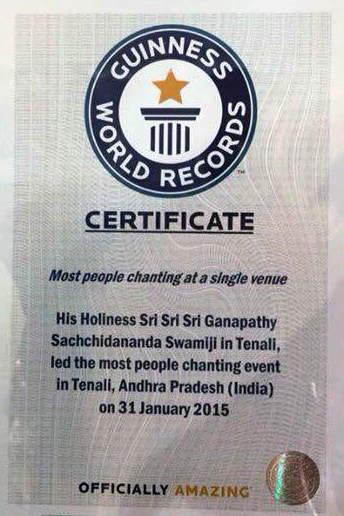Having set right the household of Maharishi Gowtama, Rama, together with Lakshmana and all the other sages, resumed His journey and in a short while set foot into the kingdom of Mithila.
Already by then many great kings and sages had assembled in Mithila to witness the yagna taking place. The entire city was bustling with people. Upon hearing that Maharishi Vishwamitra had arrived into the kingdom, King Janaka together with his chief priest Maharishi Shatananda, arrived personally to welcome them. They offered the sage the customary worship.
Janaka then enquired about the brothers, Rama and Lakshmana and found out their story in detail. He was very happy when he understood that they had come to see Shiva’s bow (dhanus).
Maharishi Shatananda was overjoyed to know of the heroic deeds performed by Rama while on the way to Mithila. Shatananda was the son of Gowtama and Ahalya and hence the news that his mother was relieved from her curse brought him unimaginable joy. Grateful to Vishwamitra for having united his parents through the medium of these two brothers, Maharishi Shatananda joyfully explained to Rama the spiritual greatness of Maharishi Vishwamitra. He told them the story of Trishanku, the method in which the Trishanku Swarga (heaven) was created, the story of Ambarisha, the methods adopted by Vishwamitra to scale up the spiritual ladder and emerge as a Brahmarishi and many other relevant episodes pertaining to Maharishi Vishwamitra.
The next morning Vishwamitra explained to the brothers Rama and Lakshmana, the history and the greatness of the Shiva’s bow. He also told them that King Janaka had vowed to give his daughter Sita in marriage to that person, who could bend and string it.
Rama was eager to see this bow. King Janaka then ordered that the bow immediately be brought forth to the Yaaga shala. His ministers in turn called for many mighty, muscular and able-bodied persons and asked them to collectively fetch the sacred bow. This bow was enclosed in a gigantic iron casket that had 8 wheels. Hundreds of able-bodied persons dragged it and with difficulty managed to bring it.
Showing the bow, King Janaka said to Rama, “This bow has been reverentially worshipped by all my ancestors. No Devata, Yaksha (celestial beings), human nor demon has been able to bend and string it to date. No one had the strength to even bend it”.
The sight of this bow created in Rama, a desire to string it. He expressed the same to Maharishi Vishwamitra. Both Vishwamitra and Janaka happily approved of it. Effortlessly Rama held the bow and lifted it up. The greatest emperors, kings, sages and all those who had assembled there were simply wonder-struck. In the presence of one and all, Rama easily pulled the rope and stretched it with an aim of stringing the bow. That’s all! All of a sudden, with an ear shattering and deafening noise like that of lightening, the bow broke into two. The earth shuddered violently. All the people present there, barring Rama, Lakshmana, Vishwamitra and Janaka swooned on the spot.
Janaka’s happiness knew no bounds. In great jubilation he said to Vishwamitra, “O Sage, Rama is the only true valorous person in this entire world. I never even imagined that such a gallant hero exists within this creation. I will give my daughter Sita’s hand to him in marriage”.
Janaka called his ministers and immediately sent them to Ayodhya with this auspicious news. Dasharatha was very thrilled to know about Rama’s marriage and together with all his relatives, friends and retinue, eagerly set forth to Mithila.
Dasharatha received a very warm welcome from King Janaka. The learned pundits, the wise great sages as well as the family priests of both the kings assembled and after the due discussions, fixed the date and time for the marriage.
Om Seeta Ramabhyaam namah.

